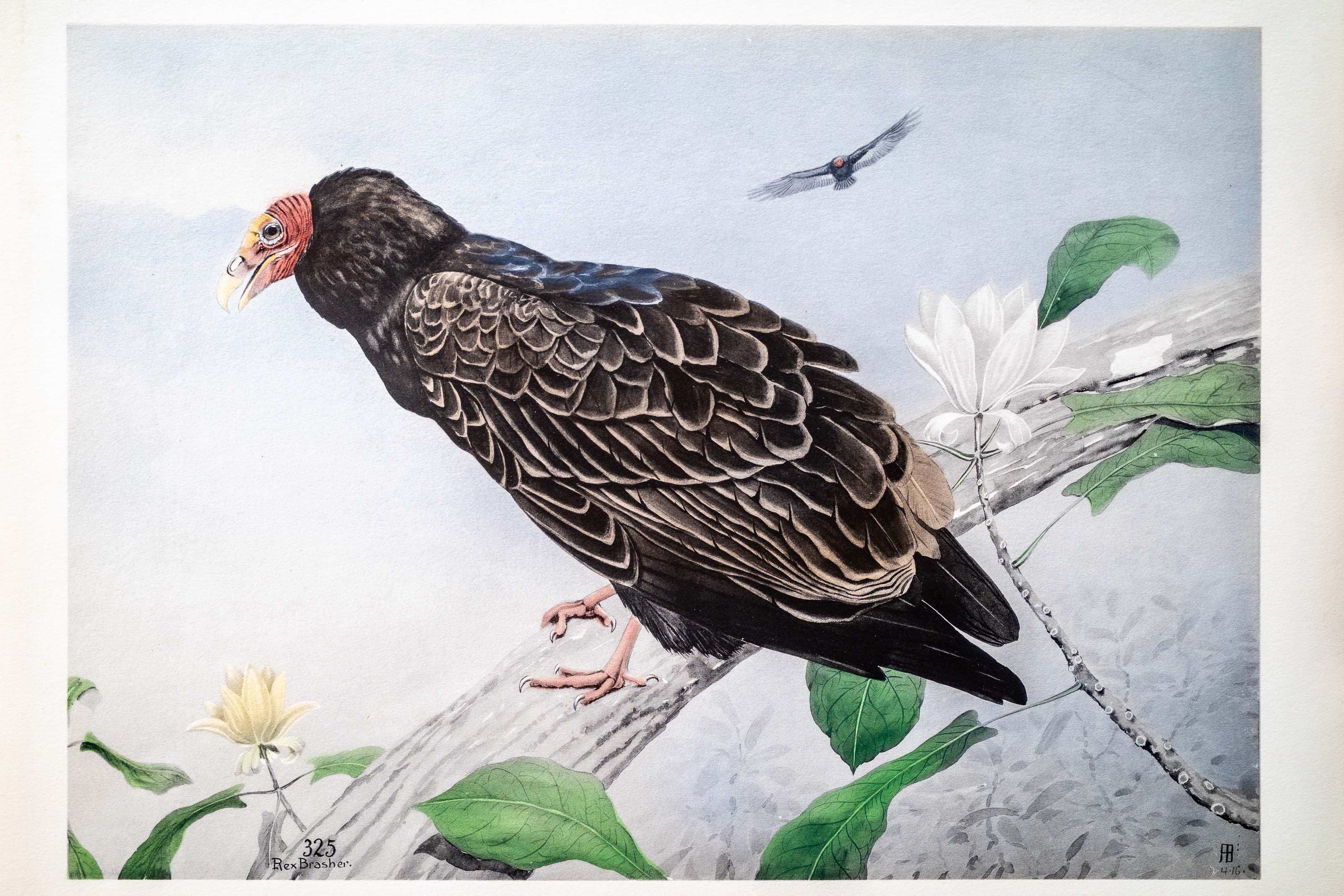
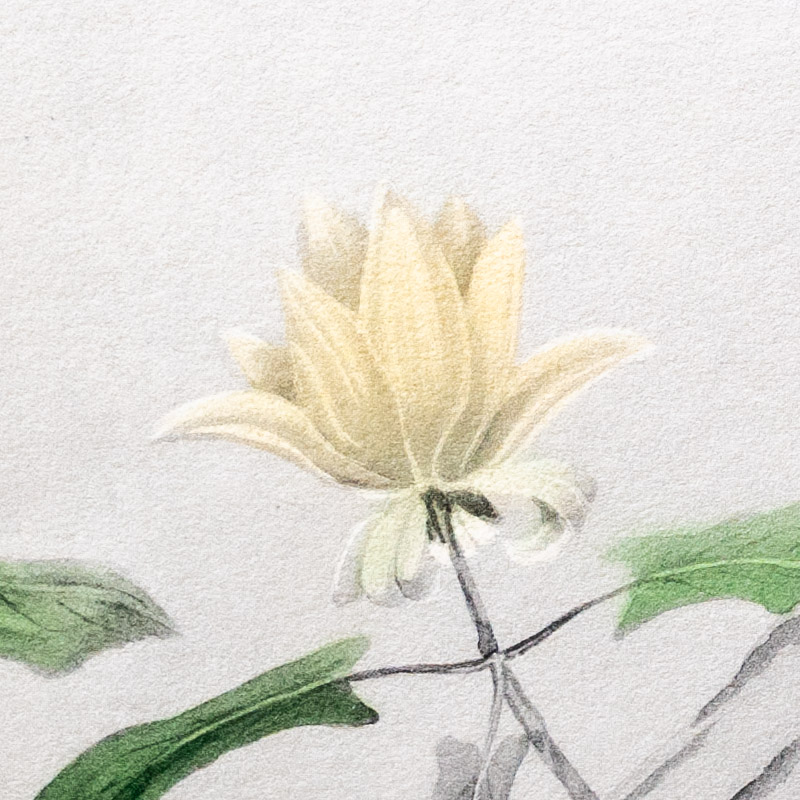
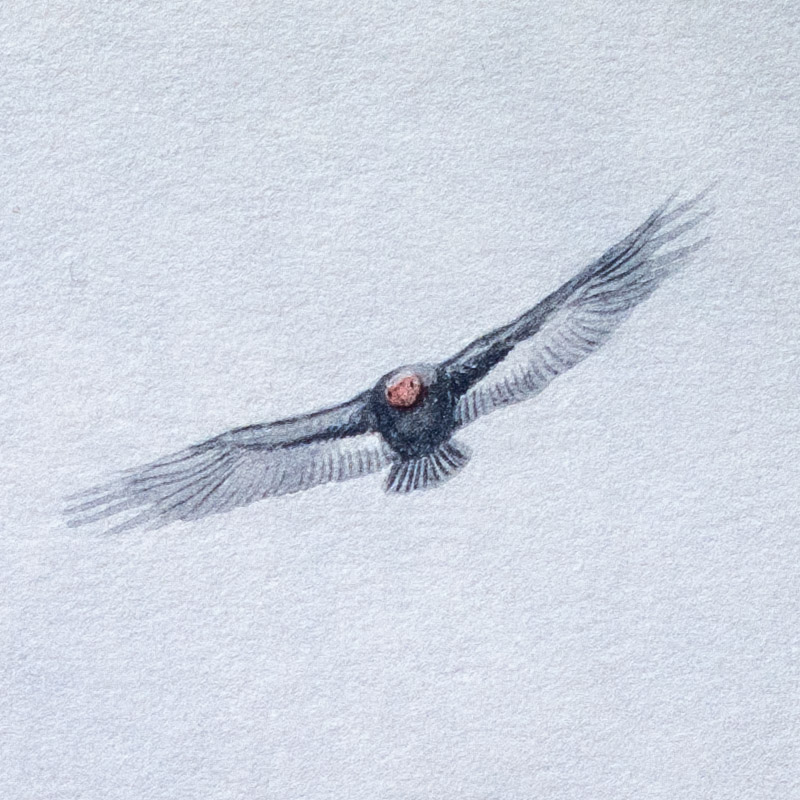
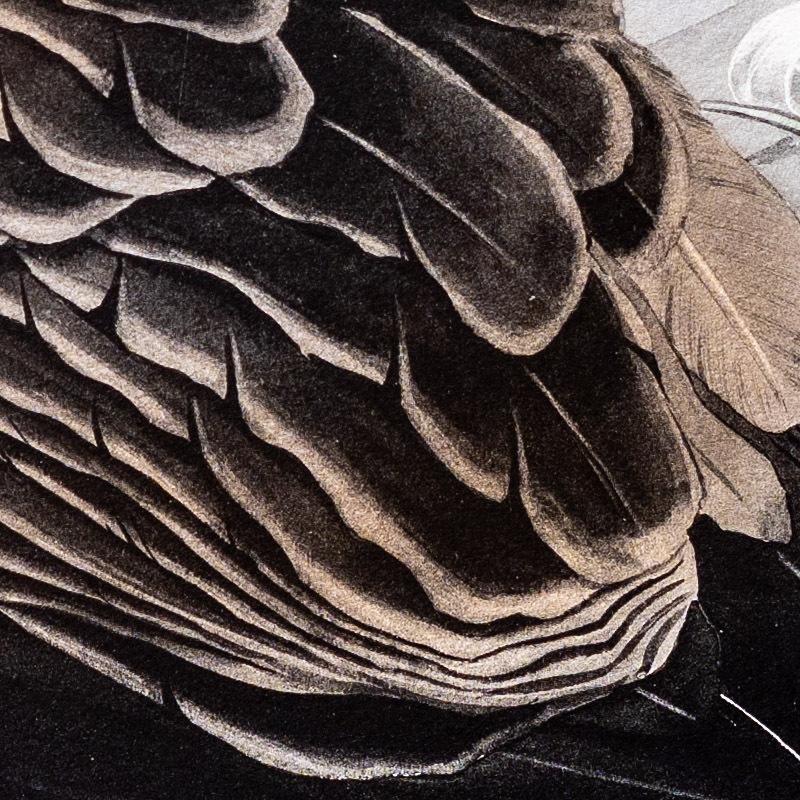
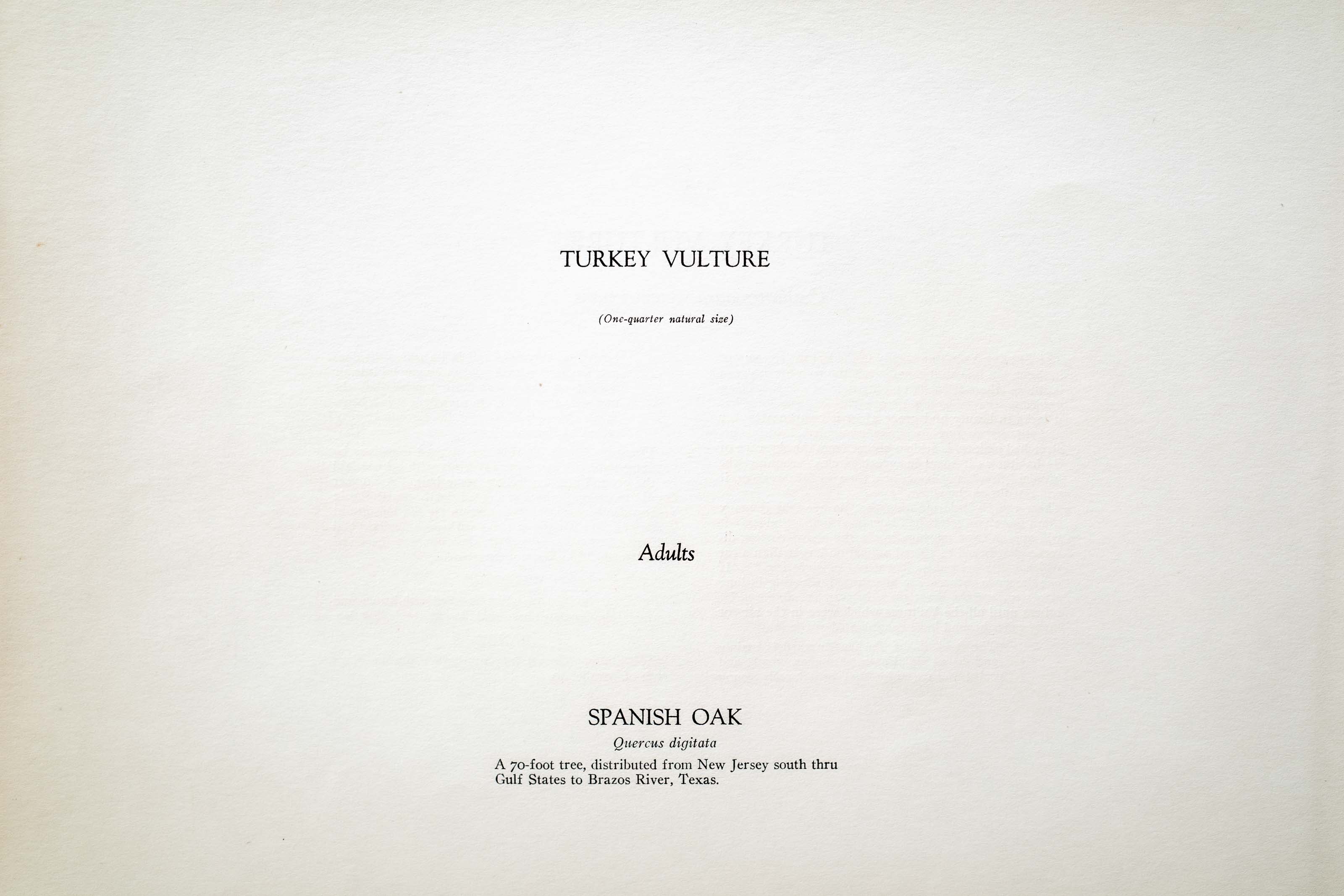
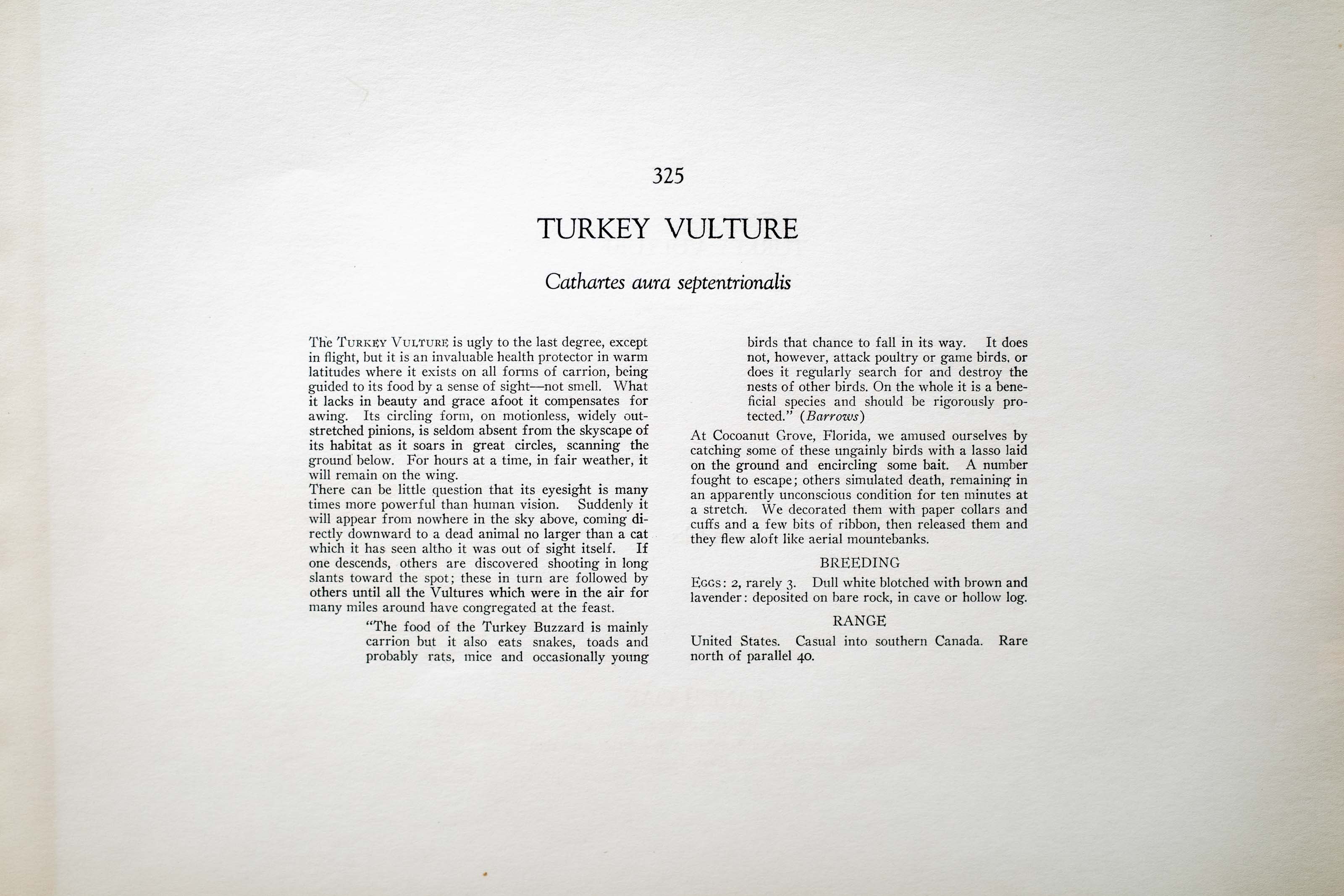

Unknown
1930
5
325
A team of dedicated board members, volunteers, and student interns has published every page in Volume 9. This volume includes 360 images of paintings and lyrical descriptions of birds, now available online for everyone to enjoy anywhere in the world. This is a monumental task. Each volume requires approximately 400 hours to photograph, edit, transcribe, catalog, and publish online. We need your support to complete this work.
If you're tech-savvy, have a good eye, are meticulous with details, and love structured data, please consider volunteering by emailing us at hello@rexbrasher.org.
We encourage all bird lovers and supporters to consider a monetary donation to support our mission to make Rex's work available for everyone. You can provide a one-time or recurring donation online.
The TURKEY VULTURE is ugly to the last degree, except in flight, but it is an invaluable health protector in warm latitudes where it exists on all forms of carrion, being guided to its food by a sense of sight — not smell. What it lacks in beauty and grace afoot it compensates for awing. Its circling form, on motionless, widely outstretched pinions, is seldom absent from the skyscape of its habitat as it soars in great circles, scanning the ground below. For hours at a time, in fair weather, it will remain on the wing.
There can be little question that its eyesight is many times more powerful than human vision. Suddenly it will appear from nowhere in the sky above, coming directly downward to a dead animal no larger than a cat which it has seen altho it was out of sight itself. If one descends, others are discovered shooting in long slants toward the spot; these in turn are followed by others until all the Vultures which were in the air for many miles around have congregated at the feast.
"The food of the Turkey Buzzard is mainly carrion but it also eats snakes, toads and probably rats, mice and occasionally young birds that chance to fall in its way. It does not, however, attack poultry or game birds, or does it regularly search for and destroy the nests of other birds. On the whole it is a beneficial species and should be rigorously protected." (Barrows)
At Cocoanut Grove, Florida, we amused ourselves by catching some of these ungainly birds with a lasso laid on the ground and encircling some bait. A number fought to escape; others simulated death, remaining in an apparently unconscious condition for ten minutes at a stretch. We decorated them with paper collars and cuffs and a few bits of ribbon, then released them and they flew aloft like aerial mountebanks.
EGGS: 2, rarely 3. Dull white blotched with brown and lavender: deposited on bare rock, in cave or hollow log.
United States. Casual into southern Canada. Rare north of parallel 40.
A 70-foot tree, distributed from New Jersey south thru Gulf States to Brazos River, Texas.